Ninhydrin, and Iodine-Fuming
Ninhydin is a chemical that reacts with the aminio acids found in fingerprints. When the chemical contacts the amino acids, the combination of the two turns a bright purple color. The coloring is known as Ruhemann’s purple, named after the man who discovered ninhydrin, Siegfried Ruhemann.
Ninhydrin has been around since 1910, but wasn’t officially used for law-enforcement purposes until 1954. Ninhydrin is especially useful for the detection of fingerprints on porous surfaces, such as wood and paper – items where normal print powders can be nearly useless.
Ninhydrin comes in pre-mixed aerosol cans and, in a chrystal form. When using the chrystals, detectives and crime scene investigators must mix the ninhydrin with a carrier, such as acetone – the same chemical that’s found in fingernail polish remover – or alcohol. The mix is then placed in a spray bottle for use.
Ninhydrin chrystals. (Photo – Sirchie Fingerprint Laboratory)
Spraying Ninhydrin on paper to develop suspected prints. (Photo – Evident Crime Scene Products)
Developed print.
Prints developed with Ninhydrin.
* Ninhydrin can cause ink to run, so it’s best to perform all other testing, such as handwriting analysis, before applying the chemical.
Ninhydrin is extremely flammable; therefore, investigators must use caution when using it.
Iodine fuming kit
Iodine fuming is also used for developing prints on porous items, such as paper, cardboard, and raw wood. Iodine fumes react with fat deposits found in fingerprints. When the chemical contacts the fat, it turns the print a brownish color. Iodine evaporates quite rapidly; therefore, developed prints can fade away. Investigators must photograph fingerprints developed with iodine.
Fuming with a iodine fuming gun, a device that blows iodine fumes across the taget area.
Prints developed with iodine fumes turn a brownish color.
* * *
Any man who will look into his heart and honestly write what he sees there will find plenty of readers. ~Edgar W. House
(I stole this quote from Jess Ferguson’s blog site. Thanks, Jess.)http://jessyferguson.blogspot.com/
*I was recently interviewed by Emmy Award winner Hank Phillippi Ryan. You can read the interview here:
http://www.jungleredwriters.com/labels/Lee%20Lofland.html
Hank is also a 2008 Agatha nominee!

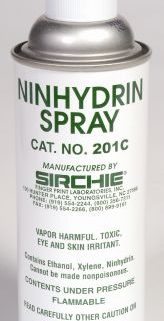
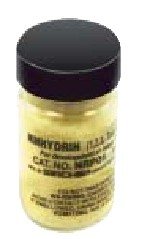
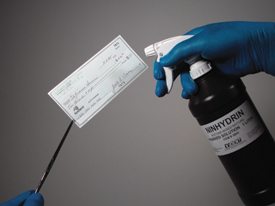

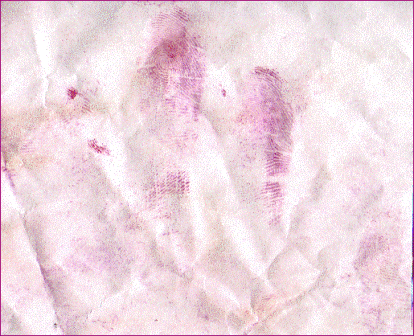

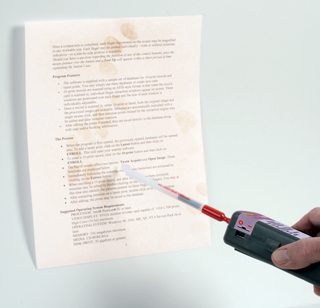
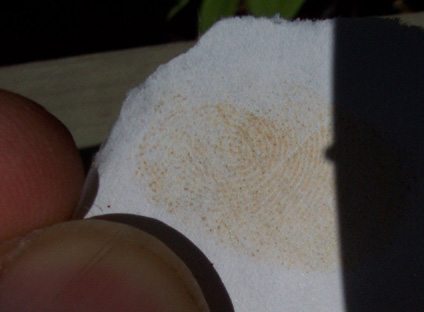



JennieB – Will do.
Rhonda – All are killers of brain cells.
Thanks, Lee. It all sounds like methyl-ethyl-nasty-schtuff.
Ick! Thank you so much. Guess I’ll have to reconsider my timeframe…
Stop by Working Stiffs and say hello to me tomorrow, OK? It’s my monthly day to blog.
JennieB – From the AnswerBag:
An unembalmed adult body buried six feet deep in ordinary soil without a coffin normally takes ten to twelve years to decompose fully to a skeleton, given a temperate climate. Immerse the body in water, and skeletonization occurs approximately four times faster; expose it to air, and it occurs eight times faster. The skeleton itself is not permanent either; acids in soils can reduce it to unrecognisable components as well.
Rhonda – Ninhydrin use can be kind of tricky. Remember, it reacts with amino acids in fingerprints. It also will react to the investigator’s skin, eyes, mucus membranes, etc. Not only are ninhydrin’s fumes toxic, the chemical carriers – acetone and alcohol – are toxic as well. And, the stuff is highly flammable.
Investigators should wear eye protection, nitrile gloves (not latex because the chemical can dissolve latex), and some sort of adequate breathing mask. Working under an exhaust hood would be ideal.
I’ve gone home more than once with purple fingers.
Iodine can cause severe irritation to the eyes, If it’s inhaled it can cause irritation and pain in the nose and throat. In a concentrated form, iodine can cause burns if contacted with the skin.
I don’t like using iodine for fuming. It turns your skin an ugly brownish yellow and it takes forever to go away. Doesn’t matter if you wear gloves because the stuff will somehow find your skin.
Thanks, Lee. I forgot where I read this, but I saw that ninydrin fumes can cause headaches? And does the same apply to iodine fuming?
Absolutely! And you’re fast becoming one of mine, especially if you can answer this question for me. I tried to look it up, honestly I did, but there were pictures, and I didn’t want to look at them… How long would it take a buried body (no coffin, no wrappings, just the thing itself with clothes on), to turn to bones? I’ve got a four-year timeframe here; that’s plenty, isn’t it?
Hank is great, isn’t she. She’s one of my favorite people. But you know, that’s the cool thing about hanging out with other writers. You soon have a ton of favorite people.
It’s a great interview, Lee. And Hank’s a great lady (in addition to being my mentor, for her sins)!
Becky – Leave it to you to come up with a question like this one. To the best of my limited knowledge (and poor note taking), ninhydrin is, and was, used extensively for the qualitative and quantitative analysis of amines, amino acids, peptides and related compounds in chemistry and biochemistry.
1910. hmm… I bet if we had his diaries, we’d find that Sherlock Holmes WAS using the stuff in his lab!
Lee, do you know what Nihydrin WAS being used for way back then?